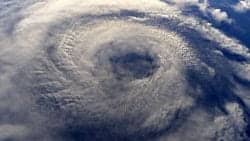
As heavy rain hits several areas of the south, ragweed pollens that are in bloom can be washed away. However, once the rain clears, pollen counts can soar. Cold and warm fronts, along with winds created by the storm, can also affect pollen and increase mold levels. The effects of these climate changes may also mean more problems for the fall allergy season as moisture and humidity can cause pollen and mold to linger. An Indian summer can also lead to extended allergen counts.
The ACAAI advises patients be made aware of climate changes connected to the storm that can affect their asthma. These climate changes include:
- Heavy rainfall –Pollen and mold counts increase, and attract West Nile carrying mosquitoes
- Cool nights and warm days – Tree, grass and ragweed pollens thrive in this environment
- Heat and humidity – Mold spores can multiply
- Wind – Pollen and mold can be stirred into the air, and when it’s warm, pollen counts surge
- Calm days – Absent winds cause allergens to be grounded, but they can be stirred into the air when mowing the lawn or raking leaves
In the event of flooding, ACAAI recommends removing the water as soon as possible and cleaning any visible mold before it spreads.
Source: American College of Allergy, Asthma and Immunology









